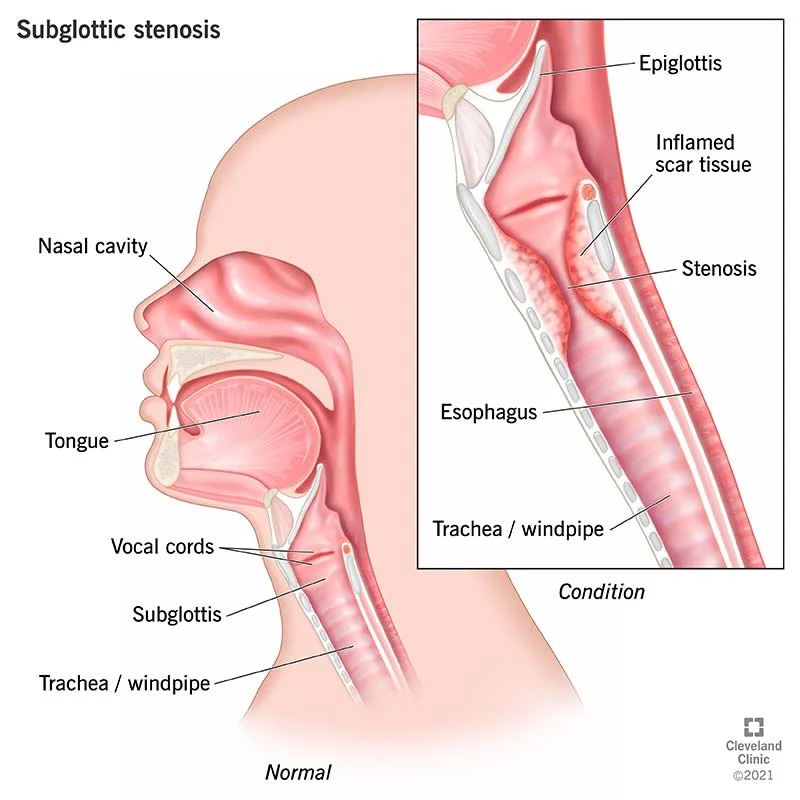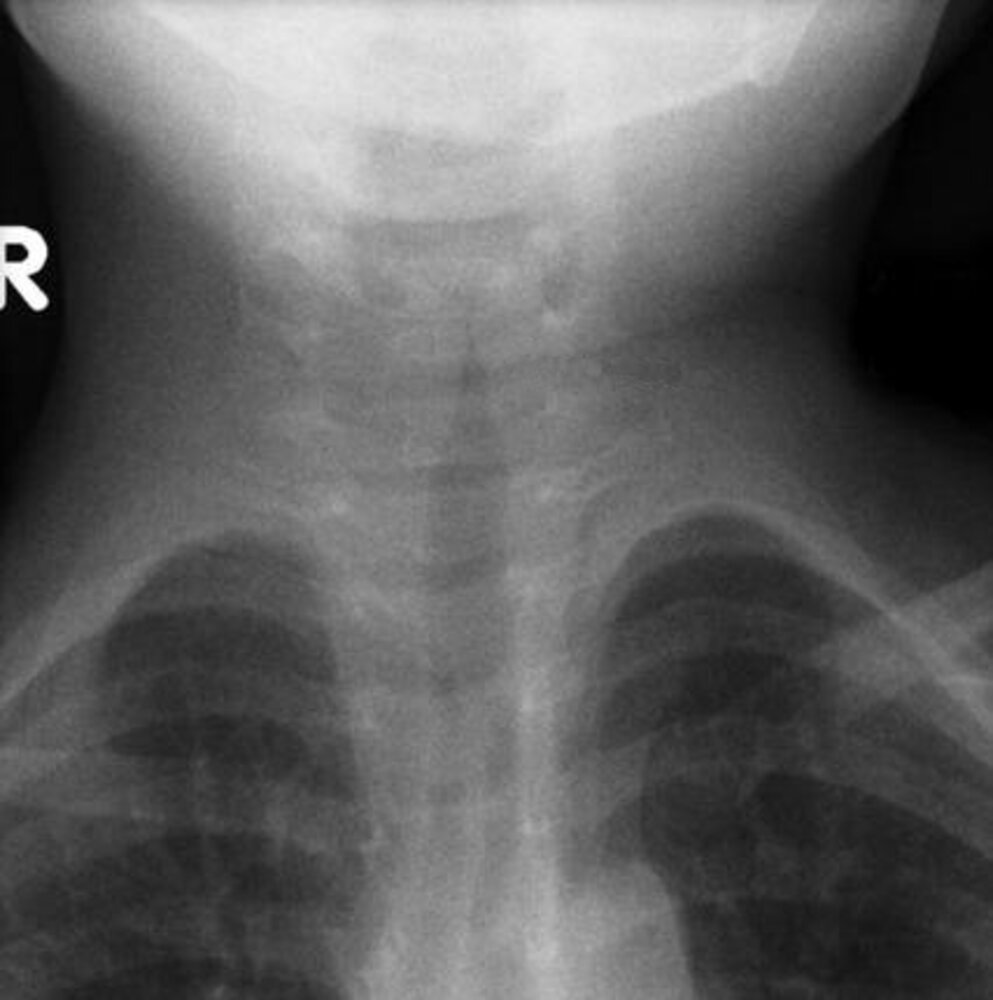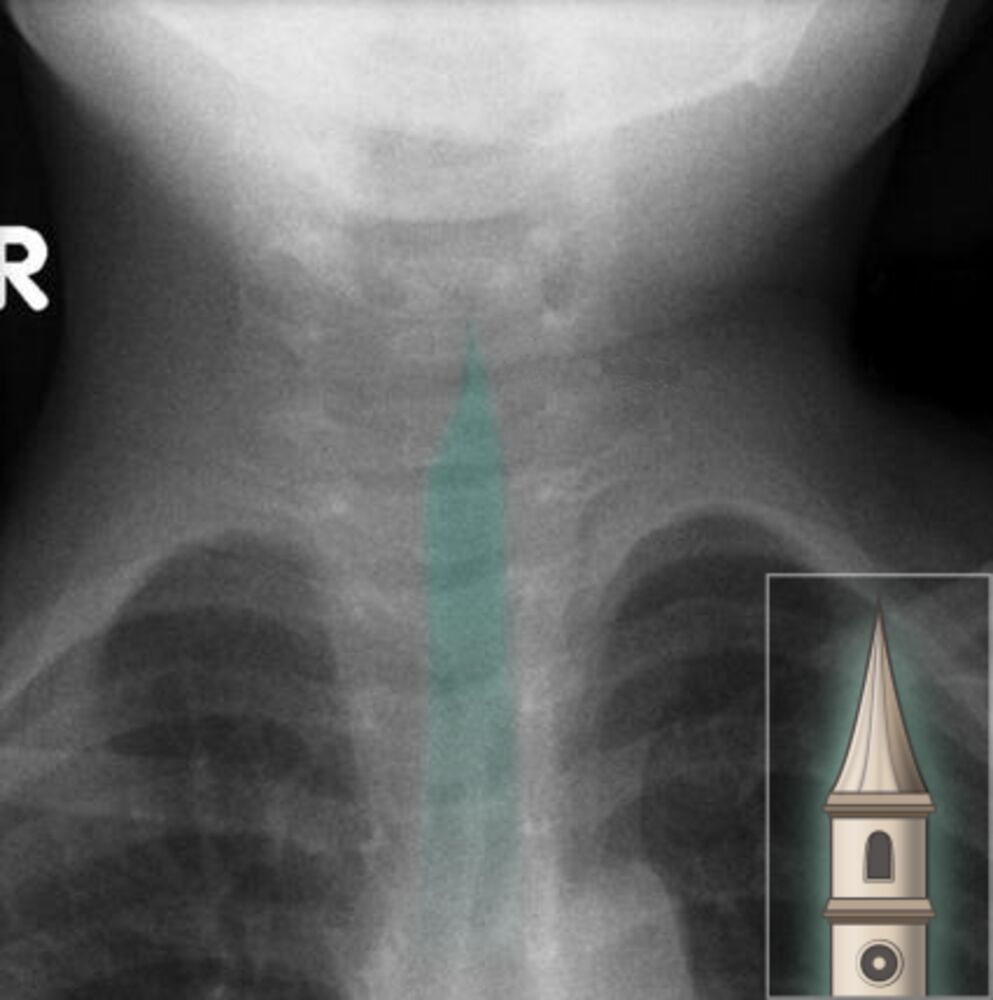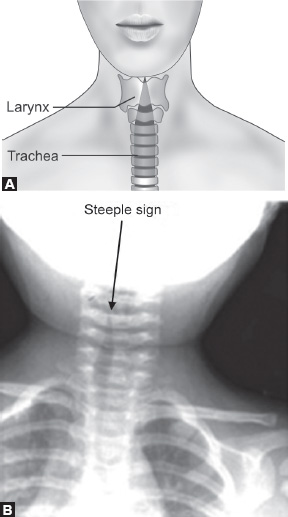Epidemiology
- Peak incidence: 6 months to 3 years
- Most common in fall and winter
- Viral infections are more likely to be acquired and transmitted in cold temperatures and dry air
Etiology
- Most common pathogen: parainfluenza viruses (75% of cases)
- Other pathogens: respiratory syncytial virus (RSV), adenovirus, influenza virus
Pathophysiology
Viral infection → inflammation of the upper airway with edema formation and infiltration of inflammatory cells → narrowing of subglottic airway (inspiratory stridor) and increased work of breathing
Clinical features
- Prodromal phase: 1–2 days of upper respiratory tract infection symptoms (rhinitis, low-grade fever, sore throat)
- Symptoms of croup last 2–7 days and typically manifest in the late evening/night.
- Characteristic features include seal-like barking cough, hoarseness, and inspiratory stridor due to subglottic narrowing.
Diagnostics
Imaging
- X-ray chest and neck (anteroposterior and lateral)
- May identify subglottic narrowing on anteroposterior view (steeple sign)



- May identify subglottic narrowing on anteroposterior view (steeple sign)
Differential diagnostics
| Croup (subglottic laryngitis; laryngotracheitis) | Epiglottitis (supraglottic laryngitis) | Foreign body (FB) aspiration | |
|---|---|---|---|
| Cause | Viral: primarily human parainfluenza viruses | H. influenza type B | foreign body |
| Cough | Barking | Absent | Chocking |
| Voice | Hoarse | Muffled | Hoarseness or inability to speak indicate a laryngotracheal FB. |
| Difficulty swallowing/drooling | Absent | Present | Depends |
| X-ray neck and chest findings | Steeple sign (subglottic narrowing on chest x-ray) | Thumbprint sign (thickening of epiglottis on lateral neck x-ray) | Most FB are radiolucent |
- Croup (Subglottic Laryngitis/Laryngotracheitis):
- Location: Inflammation occurs below the vocal cords, in the larynx and trachea (subglottic region).
- Voice: The swelling involves the vocal cords themselves, causing them to vibrate improperly, resulting in a hoarse voice.
- Cough: Inflammation and narrowing in the trachea lead to a characteristic barking cough, often described as seal-like.
- Epiglottitis (Supraglottic Laryngitis):
- Location: Inflammation occurs above the vocal cords, mainly involving the epiglottis (supraglottic region).
- Voice: The vocal cords are not the primary site of swelling, but the severely swollen epiglottis obstructs the sound coming from the larynx, resulting in a muffled voice, sometimes called a “hot potato” voice.
- Cough: Cough is typically absent in epiglottitis. The inflammation is higher up, and the intense swelling and pain may suppress the cough reflex. The primary concern is rapid airway obstruction rather than irritation causing a cough.
- Cough reflex: mediated by vagus nerve (cough receptors in trachea and large and medium diameter bronchi)